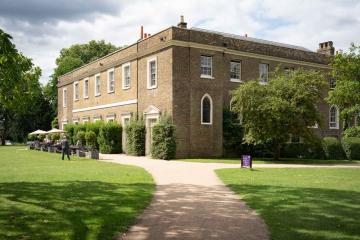This Study Day comprises three lectures, each exploring a textile and a road, examing how these changed Central Asian history.
If you enjoyed the recent British Museum exhibition ‘Silk Roads’, why not follow up with this day of special interest?
Wool, cotton and silk have each played a crucial role in the fortunes of Central Asia. Wool created the clothing and housing needed by the great nomadic cultures that dominated Middle Asia. Silk was more valuable than gold and used as currency, creating a network of trading routes that led to the first outbreak of globalisation. Cotton was the cause of Russian and then Soviet Colonisation and continues to cause controversy today, as well as human misery and environmental catastrophe.
The felts, carpets, embroideries, robes and veils of the Silk Road stratified wealth, displayed religious and political entrenchments and changed the fortunes of this fascinating part of the world; a meeting place between Mohammed and Marx.
This special interest day comprises three lectures, each exploring a textile and a road. Each lecture will also be embroidered with Chris Aslan’s own experience of living and working in the region for 15 years as he attempts to justify a rather bold assertion, 'that everything is about textiles'.
How to book this event:
Please note our Study Day is now fully booked.
THE ARTS SOCIETY ACCREDITED LECTURER

Mr Chris Aslan
Chris Aslan was born in Turkey (hence the name Aslan) and spent his childhood there and in war-torn Beirut. After school, Chris spent two years at sea before studying Media and journalism at Leicester University. He then moved to Khiva, a desert oasis in Uzbekistan, establishing a UNESCO workshop reviving fifteenth century carpet designs and embroideries, and becoming the largest non-government employer in town. He was kicked out as part of an anti-Western purge, and took a year in Cambridge to write A Carpet Ride to Khiva. Chris then spent several years in the Pamirs mountains of Tajikistan, training yak herders to comb their yaks for their cashmere-like down. Next came a couple more years in Kyrgyzstan living in the world’s largest natural walnut forest and establishing a wood-carving workshop. Since then, Chris has studied and rowed at Oxford, and is now based in Cambridge, but with plans to move to North Cyprus. When he’s not lecturing for The Arts Society, he writes. His latest book, Unravelling the Silk Road, is published by Icon Books. Chris also takes tours to Central Asia, returning whenever he can, having left a large chunk of his heart out there.
OTHER EVENTS
This lecture by Annalie Talent will explore Jane Austen’s rise to fame and her legacy, 250 years after her birth
A coach trip to explore Fulham Palace in west London, historic home to the Bishops of London




